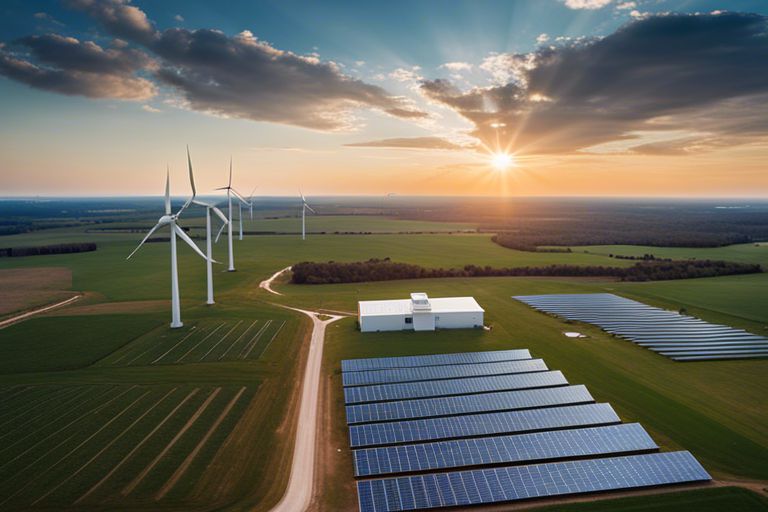Many are aware of the significant role that renewable energy sources play in combating the climate crisis. In recent years, geothermal energy has emerged as a frontrunner in the quest for sustainable alternatives. Oklahoma, known for its abundant fossil fuel reserves, holds the potential to harness the power of geothermal energy and revolutionize its renewable energy landscape. With its stable and continuous power generation, minimal environmental impact, and significant cost savings in the long run, geothermal energy could be the game-changer that propels Oklahoma towards a cleaner and more sustainable future.
Key Takeaways:
- Abundant Geothermal Potential: Oklahoma has significant geothermal energy potential due to its location on the Ring of Fire and underground hot water resources.
- Reduction in Greenhouse Gas Emissions: Utilizing geothermal energy can play a crucial role in reducing greenhouse gas emissions in Oklahoma and contribute to a cleaner environment.
- Reliable and Consistent Energy Source: Geothermal energy provides a reliable and consistent source of power, which can help in stabilizing the energy grid in Oklahoma.
- Economic Benefits: The development of geothermal energy can create job opportunities, attract investments, and stimulate economic growth in the state.
- Challenges to Overcome: While geothermal energy holds great promise, there are challenges such as high upfront costs, technological barriers, and regulatory hurdles that need to be addressed for its full-scale adoption in Oklahoma.

The Science of Geothermal Energy
While the concept of geothermal energy may seem futuristic to some, it is actually a well-established form of renewable energy that harnesses heat from the Earth’s core to generate power. This sustainable energy source has the potential to revolutionize the way we power our world, offering a reliable and environmentally friendly alternative to traditional fossil fuels.
How Geothermal Energy Works
Energy from the Earth’s core is accessed by drilling deep wells into geothermal reservoirs, where hot water and steam are naturally stored. This high-pressure steam is then used to drive turbines connected to generators, producing electricity. The process is highly efficient and can provide a constant, baseload source of power, unlike solar or wind energy, which are dependent on weather conditions.
The Geothermal Potential of Oklahoma
Geothermal energy has the potential to play a significant role in Oklahoma’s renewable energy portfolio. The state sits atop the Anadarko Basin, a geological formation rich in hot rock formations that could be tapped for geothermal energy production. With an estimated 1,500 megawatts of geothermal energy potential, Oklahoma could greatly reduce its reliance on fossil fuels and significantly curb greenhouse gas emissions.
To fully harness this potential, further exploration and development of geothermal resources in Oklahoma are needed. Investment in geothermal technology and infrastructure could pave the way for a sustainable and reliable energy future for the state, positioning it as a leader in the transition to clean energy.
Economic Implications
Cost-Benefit Analysis of Geothermal Adoption
Little is known about the economic implications of geothermal energy adoption in Oklahoma. To understand the true cost-benefit analysis, factors such as installation expenses, maintenance costs, and potential savings need to be carefully evaluated. While the initial investment may seem significant, the long-term benefits of reduced energy bills and potential government incentives could make geothermal energy a financially sound choice for both residential and commercial properties.
Job Creation and Local Economies
Local job creation and economic growth are significant factors to consider when exploring geothermal energy in Oklahoma. By investing in geothermal projects, local communities can benefit from new job opportunities in installation, maintenance, and research fields. The ripple effect of job creation can boost local economies by increasing consumer spending and tax revenues, ultimately contributing to a more sustainable and prosperous future for the state.
Geothermal projects have the potential to drive economic development by not only creating job opportunities but also by attracting investments and fostering innovation in related industries. By prioritizing geothermal energy adoption, Oklahoma can strengthen its position as a leader in renewable energy and pave the way for a more sustainable and prosperous future.

Environmental Impact
Geothermal Energy and Carbon Emissions
Despite being a powerful source of renewable energy, geothermal power plants do produce some carbon emissions. However, the emissions are significantly lower than those of fossil fuel power plants. Geothermal energy produces about one-sixth of the carbon dioxide emissions as a natural gas plant and less than one-tenth of a coal plant.
Comparison with Other Renewable Energy Sources
An important aspect of geothermal energy is how it compares to other renewable energy sources. Let’s look at a comparison between geothermal, solar, and wind energy:
| Criteria | Geothermal |
| Reliability | High – constant energy production |
| Land Use | Low – can be shared with other land uses |
| Environmental Impact | Low – minimal emissions and disturbance |
Geothermal energy is a reliable source of renewable energy that offers low environmental impact compared to solar and wind power. Its minimal land use requirements make it a promising option for the future of renewable energy in Oklahoma.
Policy and Implementation
Current Policies Supporting Geothermal Energy in Oklahoma
Unlike some other states, Oklahoma has made significant strides in supporting geothermal energy through various policies and initiatives. On the federal level, the Investment Tax Credit (ITC) and Production Tax Credit (PTC) have provided financial incentives for geothermal energy development. Additionally, the state offers property tax exemptions for geothermal systems, making them more economically feasible for homeowners and businesses.
Roadmap for Future Development
Energy experts have proposed a roadmap for the future development of geothermal energy in Oklahoma, outlining key steps to maximize its potential. This includes conducting comprehensive resource assessments to identify prime geothermal sites, streamlining permitting processes for project development, and fostering partnerships between the public sector, private industry, and research institutions to drive innovation in geothermal technology.
Supporting research and development efforts in geothermal energy is crucial to achieving sustainable growth in the sector. By investing in new technologies and exploring untapped geothermal resources, Oklahoma can further solidify its position as a leader in renewable energy innovation.
To wrap up
With these considerations in mind, it is evident that geothermal energy has significant potential to revolutionize renewable energy in Oklahoma. The state’s geological conditions and the presence of experienced oil and gas industry experts create a favorable environment for the development of geothermal projects. By capitalizing on this abundant and clean energy source, Oklahoma can reduce its dependence on fossil fuels and take a significant step towards a more sustainable future. With proper planning, investment, and support from policymakers, geothermal energy could indeed play a crucial role in diversifying the state’s energy portfolio and reducing its carbon footprint.
FAQ
Q: What is geothermal energy?
A: Geothermal energy is energy derived from the heat within the Earth’s crust. It can be harnessed for various applications, including electricity generation and heating.
Q: How can geothermal energy revolutionize renewable energy in Oklahoma?
A: Geothermal energy has the potential to provide a consistent and reliable source of clean energy in Oklahoma, diversifying the state’s renewable energy portfolio and reducing dependence on fossil fuels.
Q: Are there geothermal resources in Oklahoma?
A: Yes, Oklahoma has significant geothermal resources, including hot springs and geothermal reservoirs that can be utilized for geothermal energy production.
Q: What are the benefits of geothermal energy in Oklahoma?
A: Geothermal energy in Oklahoma can help reduce greenhouse gas emissions, create jobs in the renewable energy sector, and provide a reliable source of energy that is not dependent on weather conditions.
Q: What are the challenges of implementing geothermal energy in Oklahoma?
A: Some challenges of implementing geothermal energy in Oklahoma include upfront costs of exploration and drilling, regulatory hurdles, and public awareness about the benefits of geothermal energy.
Q: Is geothermal energy cost-effective in Oklahoma?
A: While upfront costs of geothermal projects can be high, geothermal energy has the potential to be cost-effective in the long run due to its low operational and maintenance costs and stable energy production.
Q: How can policymakers and stakeholders promote geothermal energy in Oklahoma?
A: Policymakers can support geothermal energy development in Oklahoma through incentives, funding for research and development, streamlined permitting processes, and public education campaigns to raise awareness about the benefits of geothermal energy.




